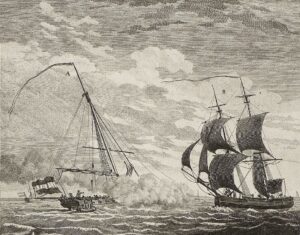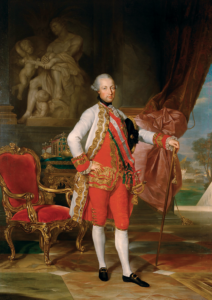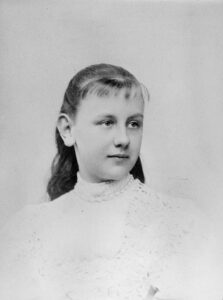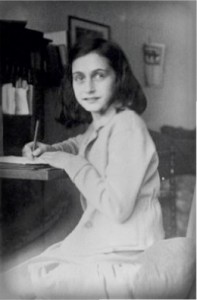netherlands
 War is often a very strange phenomenon. Some wars go on for years, while others for just one day. On such “war” was the infamous Kettle War. The war was between the Holy Roman Empire and the laughably outmatched Northern Netherlands and took place on October 8, 1784. The war was a one-battle wonder!! The events leading up to the war were a series of political upheavals and rebellions, culminating with the Northern Netherlands seceding from the Empire. That maneuver was one that would cut them off from some pretty important trading harbors. As you can imagine, Emperor Joseph II was none too pleased at this turn of events. In retaliation, he sent three warships to remove the blockade.
War is often a very strange phenomenon. Some wars go on for years, while others for just one day. On such “war” was the infamous Kettle War. The war was between the Holy Roman Empire and the laughably outmatched Northern Netherlands and took place on October 8, 1784. The war was a one-battle wonder!! The events leading up to the war were a series of political upheavals and rebellions, culminating with the Northern Netherlands seceding from the Empire. That maneuver was one that would cut them off from some pretty important trading harbors. As you can imagine, Emperor Joseph II was none too pleased at this turn of events. In retaliation, he sent three warships to remove the blockade.
Strangely, the Northern Netherlands sent only one ship, the Dolfijn. While three warships isn’t that many, it still seems foolhardy to send just one ship to take on three. Maybe it was an odd thing to do, but nothing compared to what was to follow. The battle began with a standoff. Then, the Dolfijn fired a single shot. The bullet hit no one. Strange as that is, what it did hit made the situation even more strange. The bullet hit a kettle of soup on the deck of enemy ship Le Louis. The kettle sprayed its passengers with the thick liquid. To me, that seems like a really bad shot, but that was not how the men on the Le Louis saw the situation very differently. It’s hard to say what might have been going through their minds, but the crew was instantly terrified. It’s not clear whether they were astounded by the accuracy of the shot or terrified of their apparently insane enemies, buy the Empire forces immediately surrendered. Three shiploads of military men surrendered after being missed by a bullet that basically spilled the soup. Explain that to the powers that be.
As a consequence of this short skirmish, and under the mediation of France, negotiations were reopened between the countries. This led in 1785 to the Treaty of Fontainebleau. It was decided that the Scheldt would remain closed to shipping, but that the southern Netherlands would be compensated for this by the Republic. At a rough estimate the Republic paid 2 million guilder (according to other sources 10 million guilder), which equates to 1,099,000 or 5,495,000 US dollars, depending on which estimate is correct. Soon, agreements were made between Belgium and the Netherlands about allowing access the Scheldt. As a result of the war came the decline and fall of Duke Louis Ernest of Brunswick-Lüneburg, who was the advisor to the Dutch stadtholder, who was accused of favoring the enemy due to his familial ties to Joseph. As for Belgium and the Netherlands, at least for now, there was a peaceful agreement on the use of the Scheldt.

 When a monarch becomes incapacitated or becomes monarch while under the age of 18, they can be placed under a regency, which became the normal procedure in 1937, with the passing of The Regency Acts. Prior to 1937, Regency Acts were passed only when necessary to deal with a specific situation. The Regency Act simply placed an adult, often a parent, or in the case of an incapacitated monarch, a spouse, in an advisory position over the monarch. The passing of The Recency Acts of 1937 made the procedure easier, because they realized that it could happen at any time.
When a monarch becomes incapacitated or becomes monarch while under the age of 18, they can be placed under a regency, which became the normal procedure in 1937, with the passing of The Regency Acts. Prior to 1937, Regency Acts were passed only when necessary to deal with a specific situation. The Regency Act simply placed an adult, often a parent, or in the case of an incapacitated monarch, a spouse, in an advisory position over the monarch. The passing of The Recency Acts of 1937 made the procedure easier, because they realized that it could happen at any time.
Wilhelmina Helena Pauline Maria, born August 31, 1880, was Queen of the Netherlands from 1890 until her abdication in 1948…reigning for nearly 58 years. Her reign was longer than any other Dutch monarch. The First and the Second World Wars, as well as the Dutch economic crisis of 1933, all took place during her reign. The really unusual thing about Queen Wilhelmina was that she became queen at the tender age of just 10 years old, under her mother, Emma of Waldeck and Pyrmont’s regency. Her father, King William III’s passing in 1890 brought about her ascension to the throne. Wilhelmina was their only child, and just a little girl, but that did not mean that she was incapable.
Following her ascension to the throne, Wilhelmina proved herself to be a great monarch. In a popular decision, she maintained Dutch neutrality during the First World War, while also solving many of her country’s industrial problems. Her successful business ventures made her the world’s first female billionaire in dollars. She also ensured that her family was one of seven European royal houses remaining in existence to this day. Of course, all that didn’t save her country from the German invasion of the Netherlands in 1940. At that time, Queen Wilhelmina was encouraged to flee to Britain, where she took charge of the Dutch government-in-exile. That did not mean that she was out of the spotlight and out of reach to her people. She frequently spoke to the nation over radio and came to be regarded as a symbol of the resistance. By 1948, she had already returned to the liberated Netherlands. She was the only survivor of the 16 monarchs who were sitting on their thrones at the time of her coronation.
By 1948, with her health declining, Wilhelmina abdicated the throne in favor of her daughter Juliana in  September of that year, and she retired to Het Loo Palace, where she died of cardiac arrest at the age of 82 on November 28, 1962. She was buried in the Dutch royal family crypt in the Nieuwe Kerk in Delft, on December 8, 1962. At her request and contrary to protocol, the funeral was completely in white to give expression to her belief that earthly death was the beginning of eternal life…something I really like. According to German Salic law, the House of Orange-Nassau-Dietz became extinct upon her death, but this rule is not recognized by royal Dutch succession laws. That law seems odd to me considering that her daughter, became queen after she abdicated.
September of that year, and she retired to Het Loo Palace, where she died of cardiac arrest at the age of 82 on November 28, 1962. She was buried in the Dutch royal family crypt in the Nieuwe Kerk in Delft, on December 8, 1962. At her request and contrary to protocol, the funeral was completely in white to give expression to her belief that earthly death was the beginning of eternal life…something I really like. According to German Salic law, the House of Orange-Nassau-Dietz became extinct upon her death, but this rule is not recognized by royal Dutch succession laws. That law seems odd to me considering that her daughter, became queen after she abdicated.
 Hitler was an insanly, evil ruler, and he hated the Jewish people…that is a known fact. It wasn’t anything they did, it was just his own twisted mind. That said, the Jewish people found themselves hiding in order to save their lives. Anne Frank was one of the most famous of those persecuted Jewish people, most likely because of her diary, which was published by her father following her death at the Bergen-Belsen concentration camp in Germany, and his release following the liberation of the camps. Annelies Marie Frank was born in Frankfurt, Germany, on June 12, 1929. She was the second daughter of Otto Frank and Edith Frank-Hollander, both of Jewish families that had lived in Germany for centuries. With the rise of Nazi leader Adolf Hitler in 1933, Otto moved his family to Amsterdam to escape the escalating Nazi persecution of Jews. In Holland, he ran a successful spice and jam business. Anne attended a Montessori school with other middle-class Dutch children, but with the German invasion of the Netherlands in 1940 she was forced to transfer to a Jewish school. In 1942, Otto began preparing a hiding place in an annex of his warehouse on the Prinsengracht Canal in Amsterdam. It was a wise move, given what was coming. The family moved in on July 15, 1942, when Anne’s sister, Margot received a letter telling her to report to the labor camps in Germany. Knowing what that meant, the family took refuge in the secret hiding place they had prepared. This would be their home for the next 25 months.
Hitler was an insanly, evil ruler, and he hated the Jewish people…that is a known fact. It wasn’t anything they did, it was just his own twisted mind. That said, the Jewish people found themselves hiding in order to save their lives. Anne Frank was one of the most famous of those persecuted Jewish people, most likely because of her diary, which was published by her father following her death at the Bergen-Belsen concentration camp in Germany, and his release following the liberation of the camps. Annelies Marie Frank was born in Frankfurt, Germany, on June 12, 1929. She was the second daughter of Otto Frank and Edith Frank-Hollander, both of Jewish families that had lived in Germany for centuries. With the rise of Nazi leader Adolf Hitler in 1933, Otto moved his family to Amsterdam to escape the escalating Nazi persecution of Jews. In Holland, he ran a successful spice and jam business. Anne attended a Montessori school with other middle-class Dutch children, but with the German invasion of the Netherlands in 1940 she was forced to transfer to a Jewish school. In 1942, Otto began preparing a hiding place in an annex of his warehouse on the Prinsengracht Canal in Amsterdam. It was a wise move, given what was coming. The family moved in on July 15, 1942, when Anne’s sister, Margot received a letter telling her to report to the labor camps in Germany. Knowing what that meant, the family took refuge in the secret hiding place they had prepared. This would be their home for the next 25 months.
Nineteen months earlier, on December 1, 1940, Anne’s father Otto Frank moved the offices of the spice and gelling companies he worked for, Opekta and Pectacon, from an address on Singel canal to Prinsengracht 263. The warehouse on Prinsengracht Canal, where Otto Frank ran his business, was a perfect place to create a safe room for his family, should the need ever arise. On July 15, 1942, the need arose. The ground floor of the building consisted of three sections. The front was the goods and dispatch entrance, basically the storefront. Behind the storefront  was the middle section where the spice mills were located. At the rear, which was the ground floor of the annex, was the warehouse where the goods were packed for distribution. On the first floor above were the offices of Frank’s employees…Miep Gies, Bep Voskuijl (known in Anne Frank’s diary as Elli) and Johannes Kleiman were in the front office. Victor Kugler in the middle and Otto Frank in the rear office above the warehouse and below the floors which would later hide him and his family for two years until their betrayal to the Nazi authorities. The Achterhuis (Dutch for “back house”) or Secret Annex…as it was called in The Diary of a Young Girl, an English translation of the diary…is the rear extension of the building. It was concealed from view by houses on all four sides of a quadrangle. Its secluded position made it an ideal hiding place for Otto Frank, his wife Edith, two daughters, Margot and Anne, and four other Jews seeking refuge from Nazi persecution. Though the total amount of floor space in the inhabited rooms came to only about 500 square feet, Anne Frank wrote in her diary that it was relatively luxurious compared to other hiding places they had heard about. Those in hiding had been so careful. The entrance to the secret annex was hidden by a hinged bookcase, and former employees of Otto and other Dutch friends delivered them food and supplies procured at high risk. Anne and the others lived in rooms with blacked-out windows, and never flushed the toilet during the day out of fear that their presence would be detected. In June 1944, Anne’s spirits were raised by the Allied landing at Normandy, and she was hopeful that the long-awaited liberation of Holland would soon begin.
was the middle section where the spice mills were located. At the rear, which was the ground floor of the annex, was the warehouse where the goods were packed for distribution. On the first floor above were the offices of Frank’s employees…Miep Gies, Bep Voskuijl (known in Anne Frank’s diary as Elli) and Johannes Kleiman were in the front office. Victor Kugler in the middle and Otto Frank in the rear office above the warehouse and below the floors which would later hide him and his family for two years until their betrayal to the Nazi authorities. The Achterhuis (Dutch for “back house”) or Secret Annex…as it was called in The Diary of a Young Girl, an English translation of the diary…is the rear extension of the building. It was concealed from view by houses on all four sides of a quadrangle. Its secluded position made it an ideal hiding place for Otto Frank, his wife Edith, two daughters, Margot and Anne, and four other Jews seeking refuge from Nazi persecution. Though the total amount of floor space in the inhabited rooms came to only about 500 square feet, Anne Frank wrote in her diary that it was relatively luxurious compared to other hiding places they had heard about. Those in hiding had been so careful. The entrance to the secret annex was hidden by a hinged bookcase, and former employees of Otto and other Dutch friends delivered them food and supplies procured at high risk. Anne and the others lived in rooms with blacked-out windows, and never flushed the toilet during the day out of fear that their presence would be detected. In June 1944, Anne’s spirits were raised by the Allied landing at Normandy, and she was hopeful that the long-awaited liberation of Holland would soon begin.
The family remained hidden here for two years and one month, praying that the war would end, and Hitler would be defeated before they were found. They stayed there until they were anonymously betrayed to the Nazi authorities by a Dutch informer, arrested, and deported to their deaths in concentration camps. Of the hidden group, only Otto Frank survived the concentration death camps. It was on this day, August 4, 1944, that time ran out for the family and friends in the secret annex. The Nazi Gestapo showed up at the warehouse,  and they knew everything they needed to know about how to find the group of Jews in the secluded hiding place. They went right to the bookcase door and charged into the secret rooms. I can only imagine the terror that followed…the screaming, the running, the fear of knowing what was probably coming next. They were sent to a concentration camp in Holland, and in September Anne and most of the others were shipped to the Auschwitz death camp in Poland. In the fall of 1944, with the Soviet liberation of Poland underway, Anne was moved with her sister Margot to the Bergen-Belsen concentration camp in Germany. Suffering under the deplorable conditions of the camp, the two sisters caught typhus and died in early March 1945. The camp was liberated by the British less than two months later. Otto Frank was the only one of the 10 to survive the Nazi death camps. Two short months…or six short months, if you look at when they were captured. What a waste of a life or lives, and all because of the insanity of one man.
and they knew everything they needed to know about how to find the group of Jews in the secluded hiding place. They went right to the bookcase door and charged into the secret rooms. I can only imagine the terror that followed…the screaming, the running, the fear of knowing what was probably coming next. They were sent to a concentration camp in Holland, and in September Anne and most of the others were shipped to the Auschwitz death camp in Poland. In the fall of 1944, with the Soviet liberation of Poland underway, Anne was moved with her sister Margot to the Bergen-Belsen concentration camp in Germany. Suffering under the deplorable conditions of the camp, the two sisters caught typhus and died in early March 1945. The camp was liberated by the British less than two months later. Otto Frank was the only one of the 10 to survive the Nazi death camps. Two short months…or six short months, if you look at when they were captured. What a waste of a life or lives, and all because of the insanity of one man.
 James, it is so hard to believe that yet another of my grand nephews is graduating. It still seems like you should be just a little boy. I know that is crazy, because you and Caalab are the same age, and you are ten days older in fact. The years have flown by so quickly. I remember the day you were born, and every milestone in between that day and graduation. Now you are a man, and we couldn’t be more proud of the man you have become. You are a quiet man much of the time, but the little kids all love being around you so much. Watching you yesterday with Aleesia, and all the fun she was having climbing all over you, and then Raelynn and Audrianna coming in and making a beeline for you. It is so obvious that they all just love you so much.
James, it is so hard to believe that yet another of my grand nephews is graduating. It still seems like you should be just a little boy. I know that is crazy, because you and Caalab are the same age, and you are ten days older in fact. The years have flown by so quickly. I remember the day you were born, and every milestone in between that day and graduation. Now you are a man, and we couldn’t be more proud of the man you have become. You are a quiet man much of the time, but the little kids all love being around you so much. Watching you yesterday with Aleesia, and all the fun she was having climbing all over you, and then Raelynn and Audrianna coming in and making a beeline for you. It is so obvious that they all just love you so much.
 While our minds are able to clearly see all the years that have gone by, and what a cute little boy you were, we find ourselves struggling with the fact that the little boy you were is gone forever now…and in his place is a tall young man, who is ready for the world and the next step in his journey in life. Whether you know exactly where you are headed, or if your plans are still in the works, I know that you will succeed in whatever you decide to do, because you are a person who completes what he starts. Still, today is about a finished race. You have completed all the requirements to receive your high school diploma…the achievement that we take you the longest time among life’s achievements. Before you now stands the next door in your life, and it is up to you to choose where that door will lead. No one else can make the decision for you. Your parents and family can advise you, but the choice is your and yours alone.
While our minds are able to clearly see all the years that have gone by, and what a cute little boy you were, we find ourselves struggling with the fact that the little boy you were is gone forever now…and in his place is a tall young man, who is ready for the world and the next step in his journey in life. Whether you know exactly where you are headed, or if your plans are still in the works, I know that you will succeed in whatever you decide to do, because you are a person who completes what he starts. Still, today is about a finished race. You have completed all the requirements to receive your high school diploma…the achievement that we take you the longest time among life’s achievements. Before you now stands the next door in your life, and it is up to you to choose where that door will lead. No one else can make the decision for you. Your parents and family can advise you, but the choice is your and yours alone.
 For now, James will attend Casper College, and take the required courses for graduation, since he hasn’t settled on a career path for sure. That’s never a bad idea. Taking all the basic classes leaves you with the ones that really interest you when you know where your career is headed. James is also hoping to save money to take a trip to the Netherlands, where his girlfriend is from. Julia is a foreign exchange student at Kelly Walsh, but will be heading home soon, so he wants to go see her there in her home country. Who knows, maybe he will choose to go to college there. Again, only time will tell, but for now, James is simply looking forward to his graduation, because it is the goal he has worked long and hard for. Congratulations James Renville!! We are very proud of you!! Way to go!!
For now, James will attend Casper College, and take the required courses for graduation, since he hasn’t settled on a career path for sure. That’s never a bad idea. Taking all the basic classes leaves you with the ones that really interest you when you know where your career is headed. James is also hoping to save money to take a trip to the Netherlands, where his girlfriend is from. Julia is a foreign exchange student at Kelly Walsh, but will be heading home soon, so he wants to go see her there in her home country. Who knows, maybe he will choose to go to college there. Again, only time will tell, but for now, James is simply looking forward to his graduation, because it is the goal he has worked long and hard for. Congratulations James Renville!! We are very proud of you!! Way to go!!

